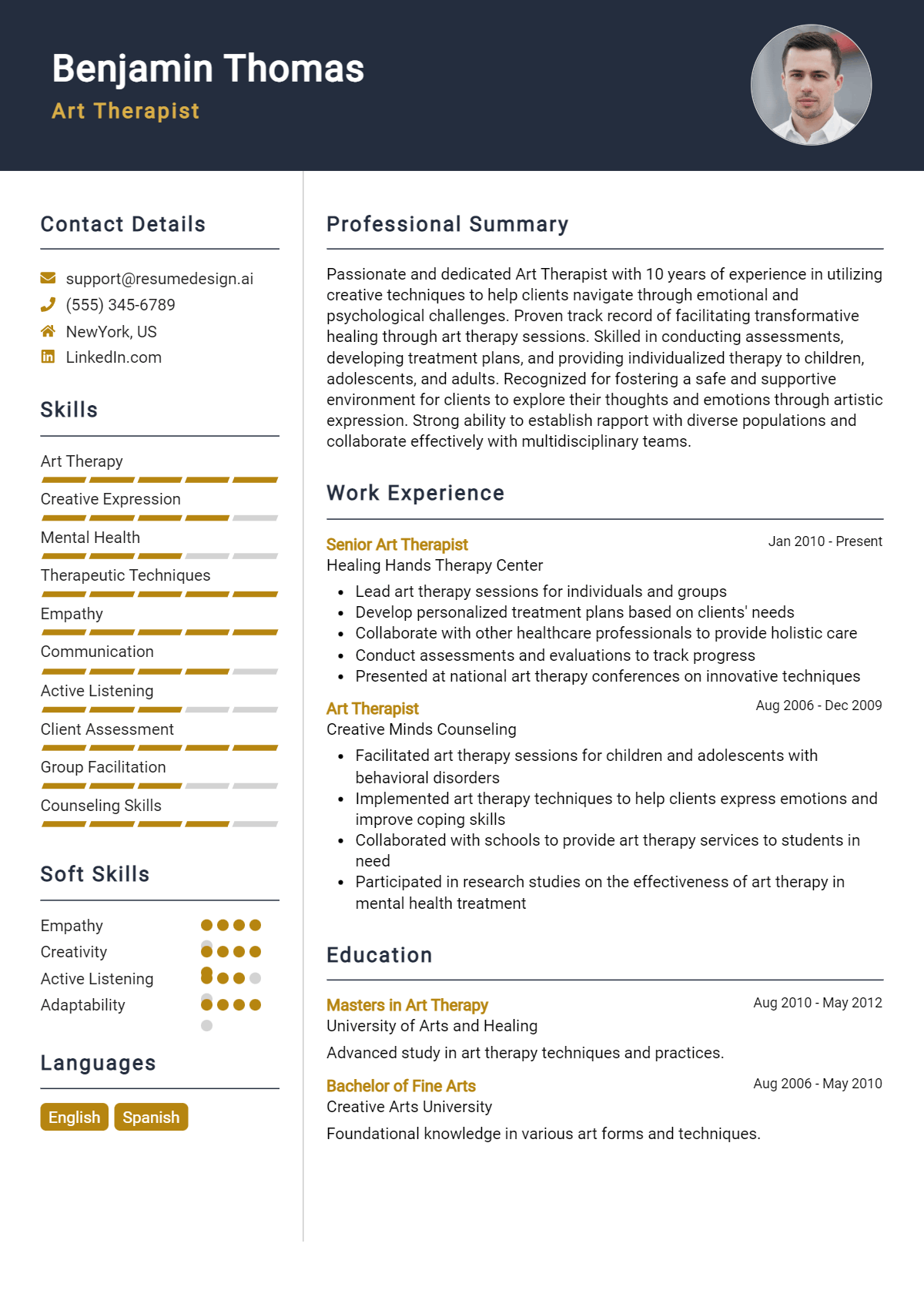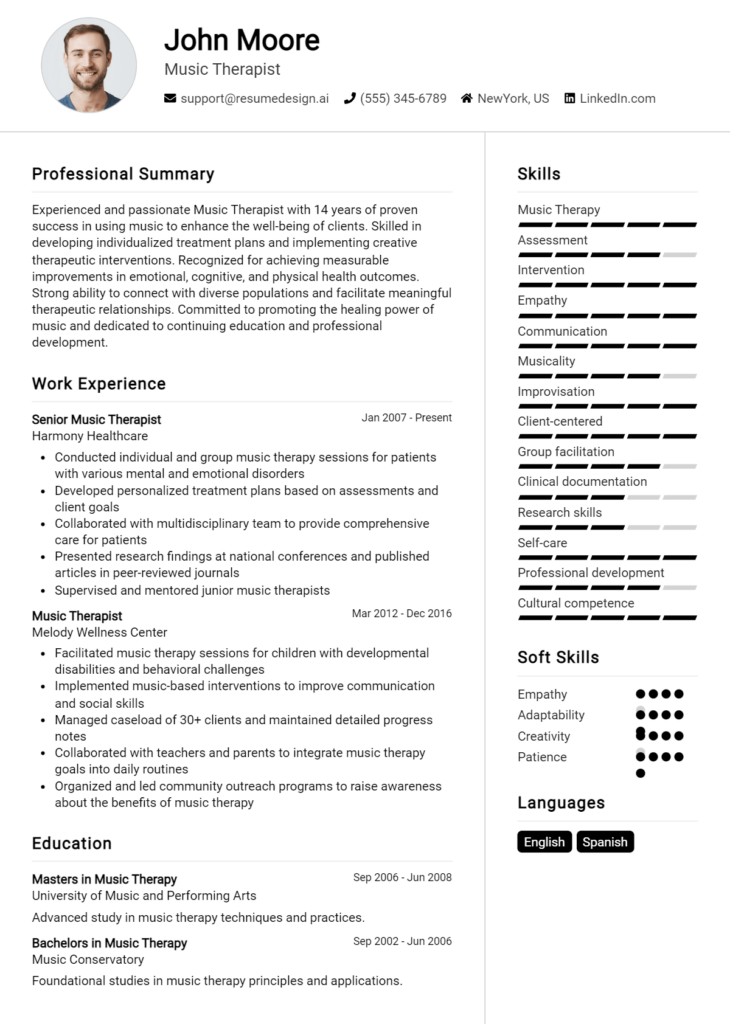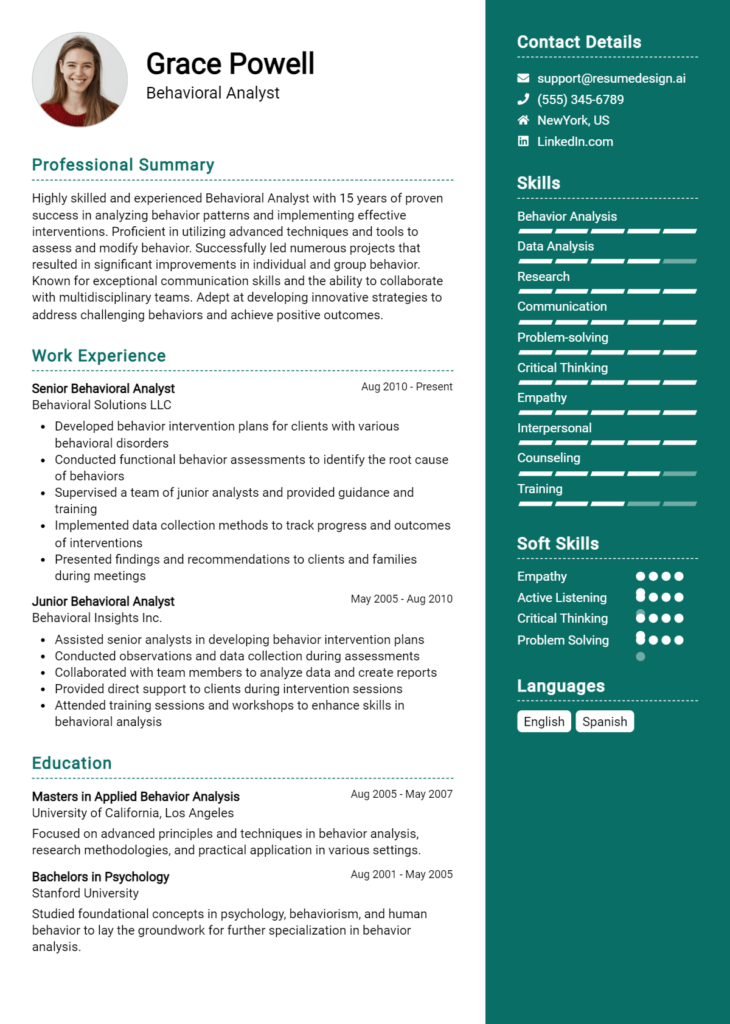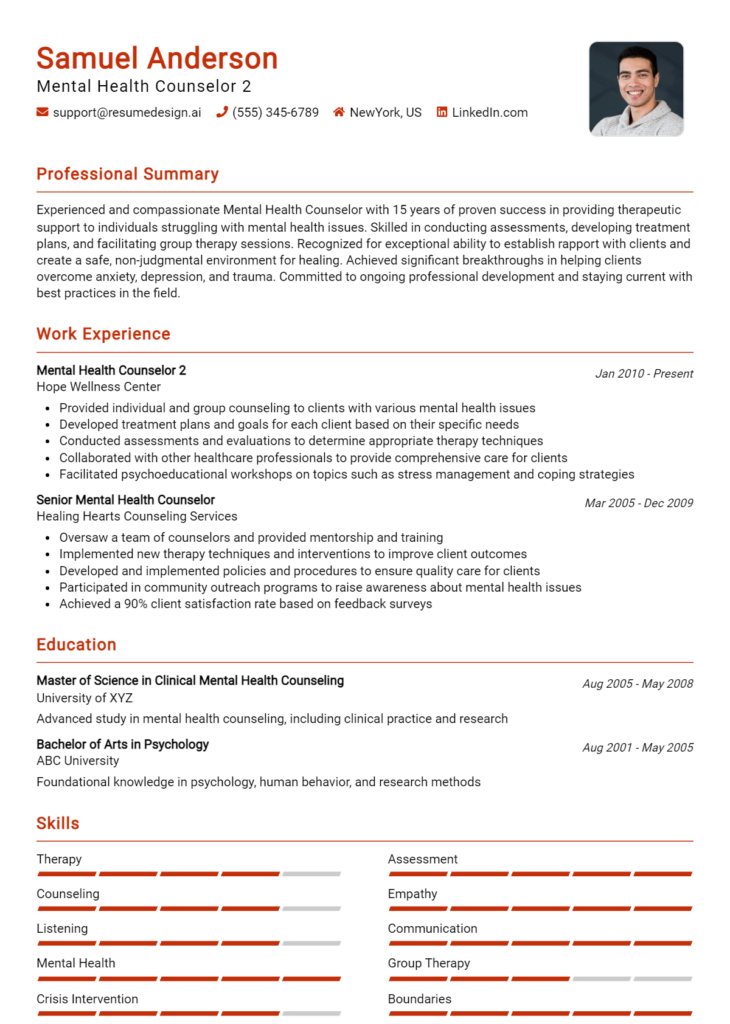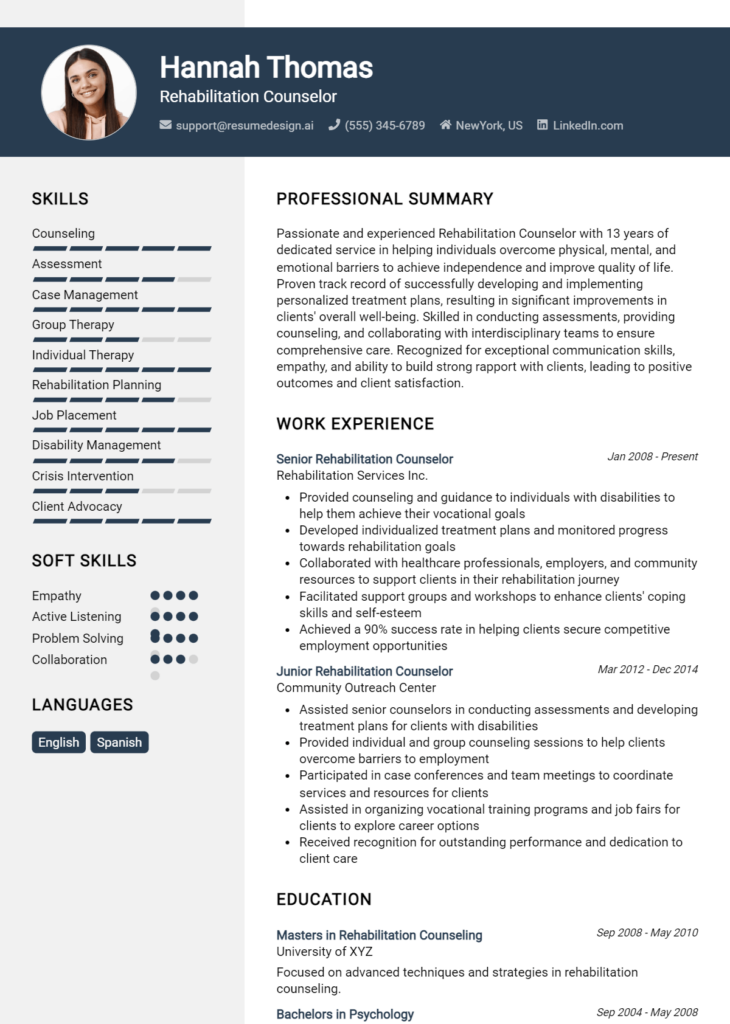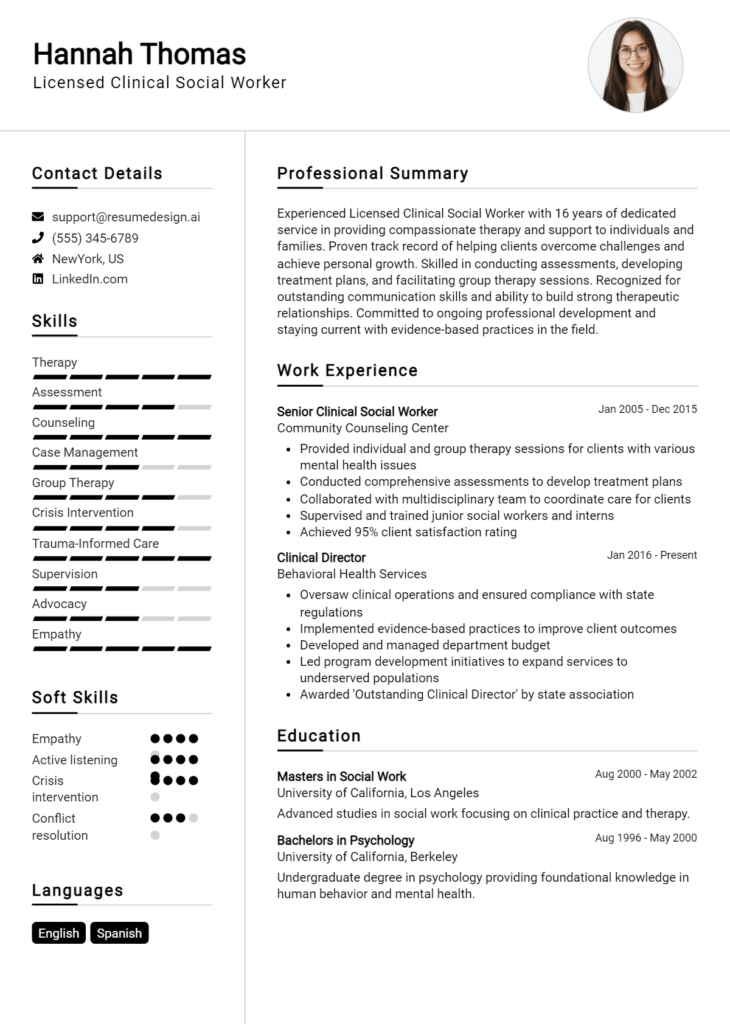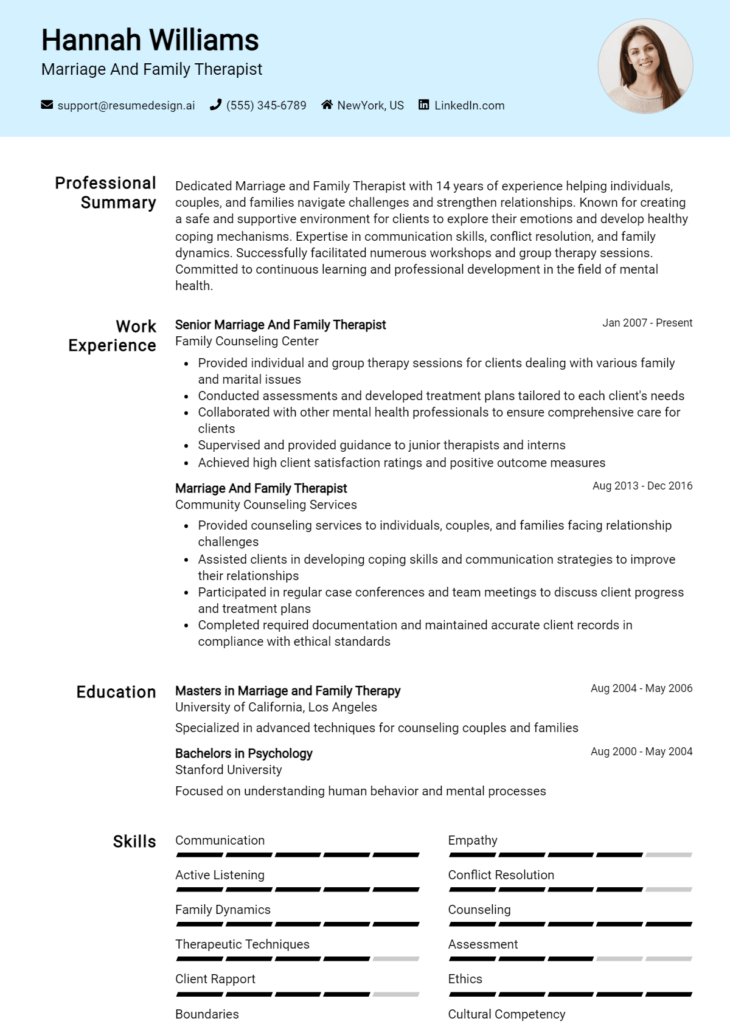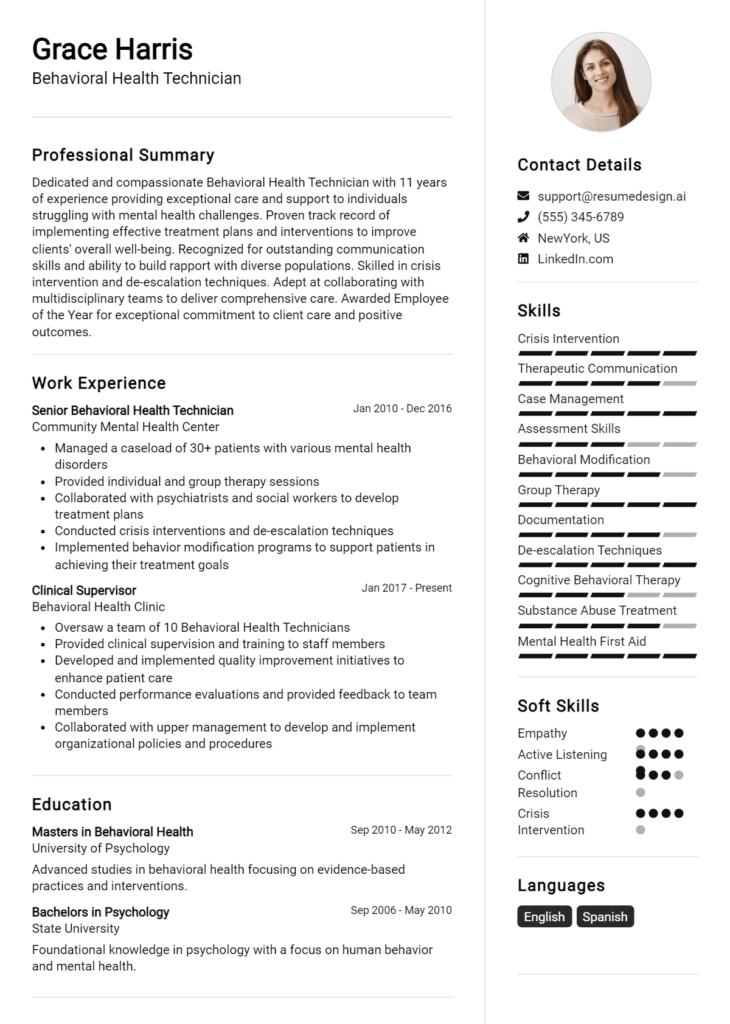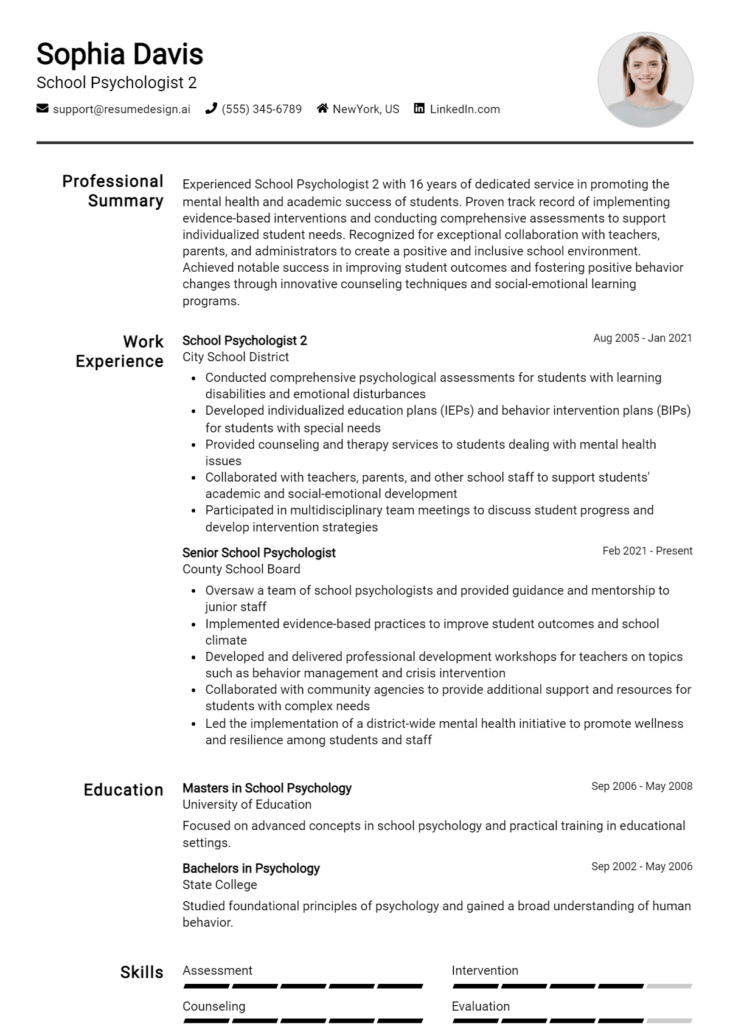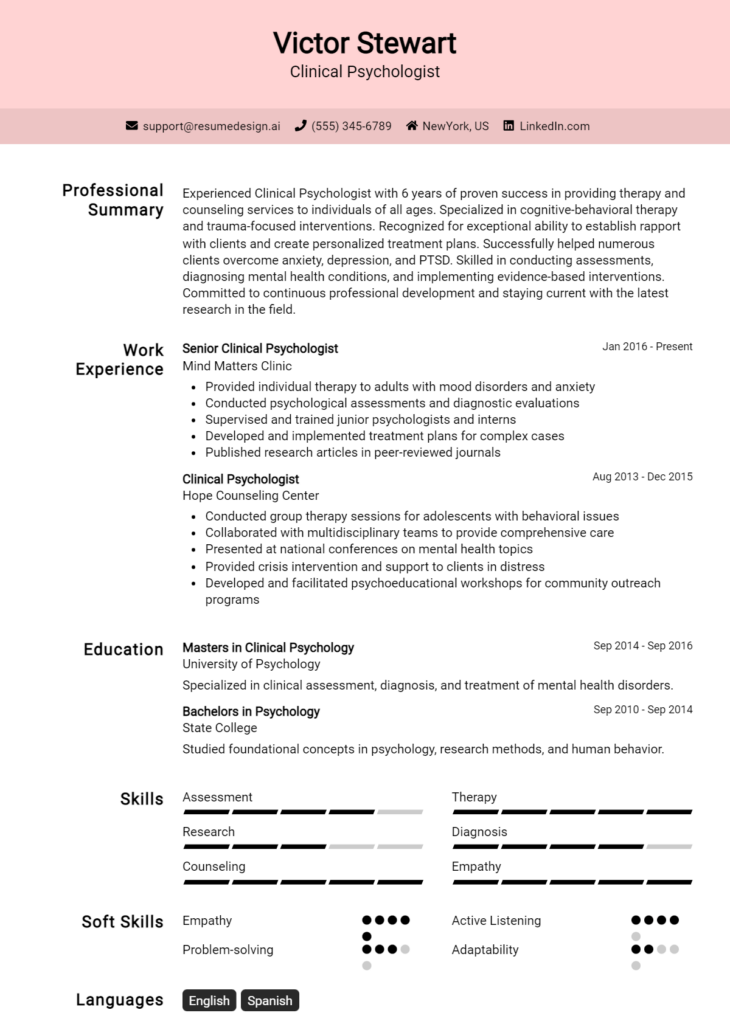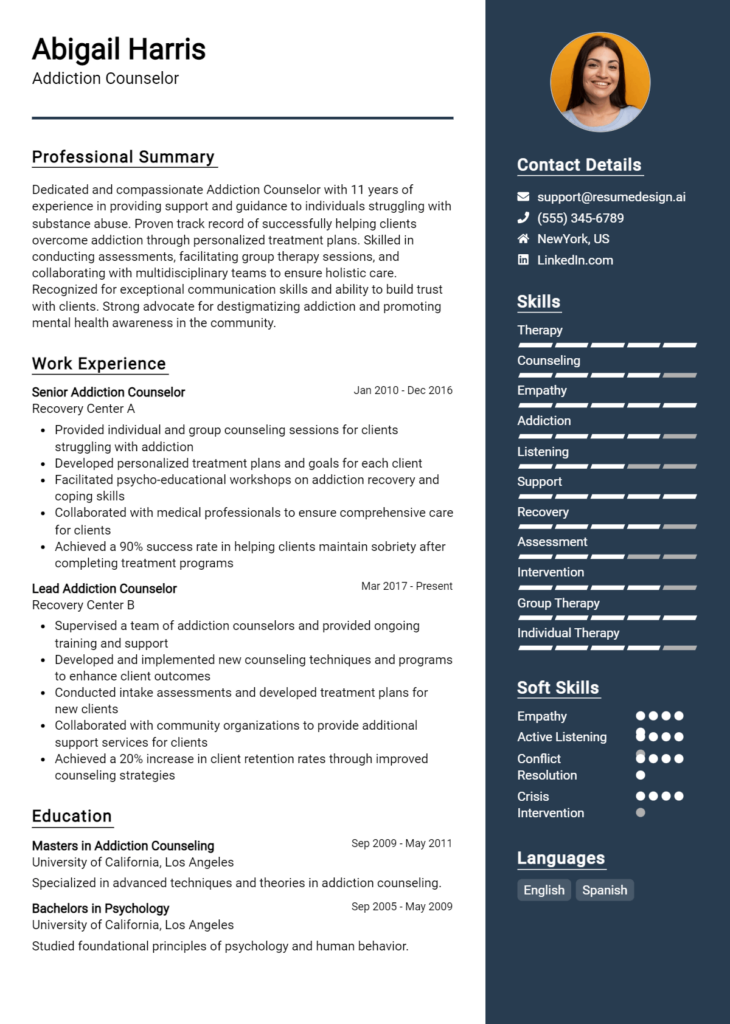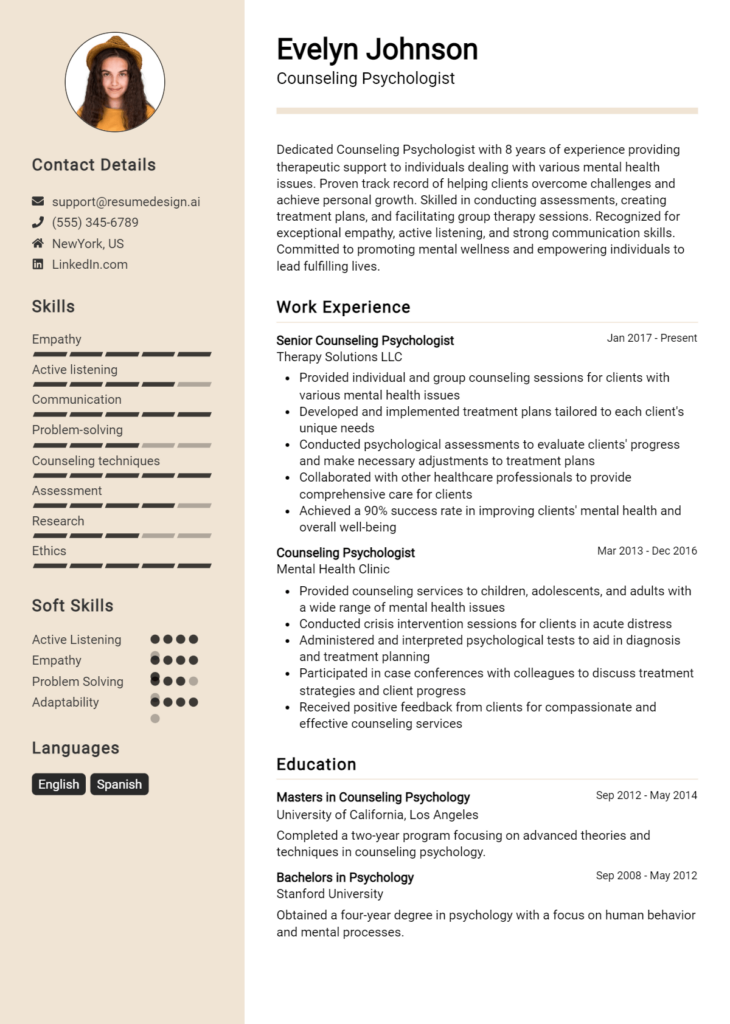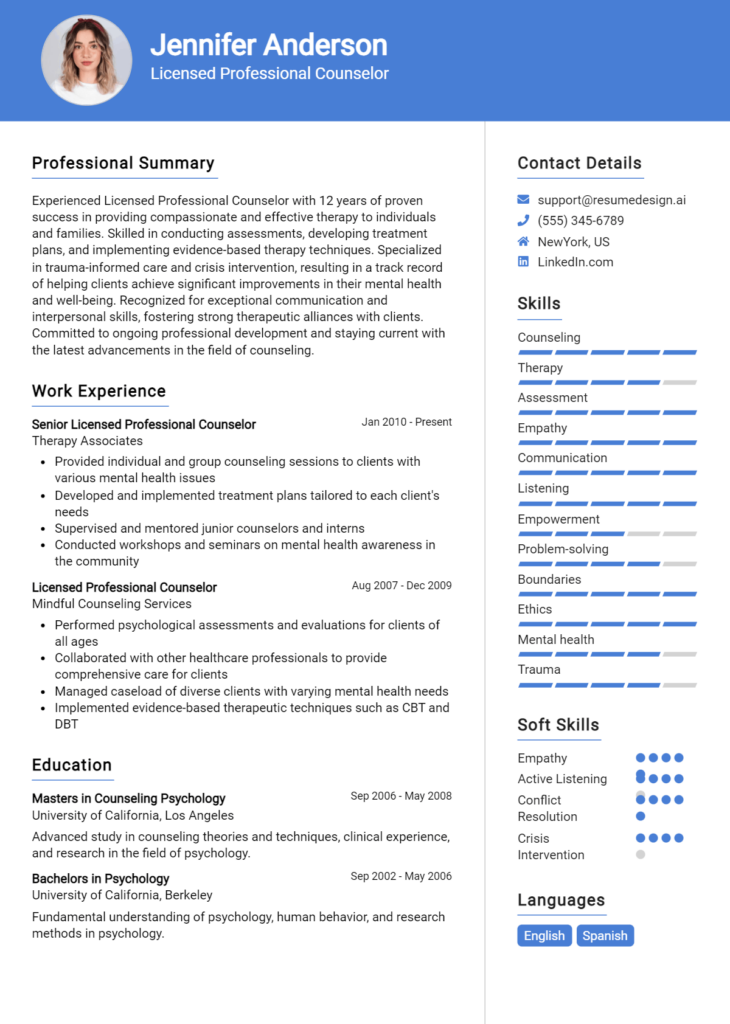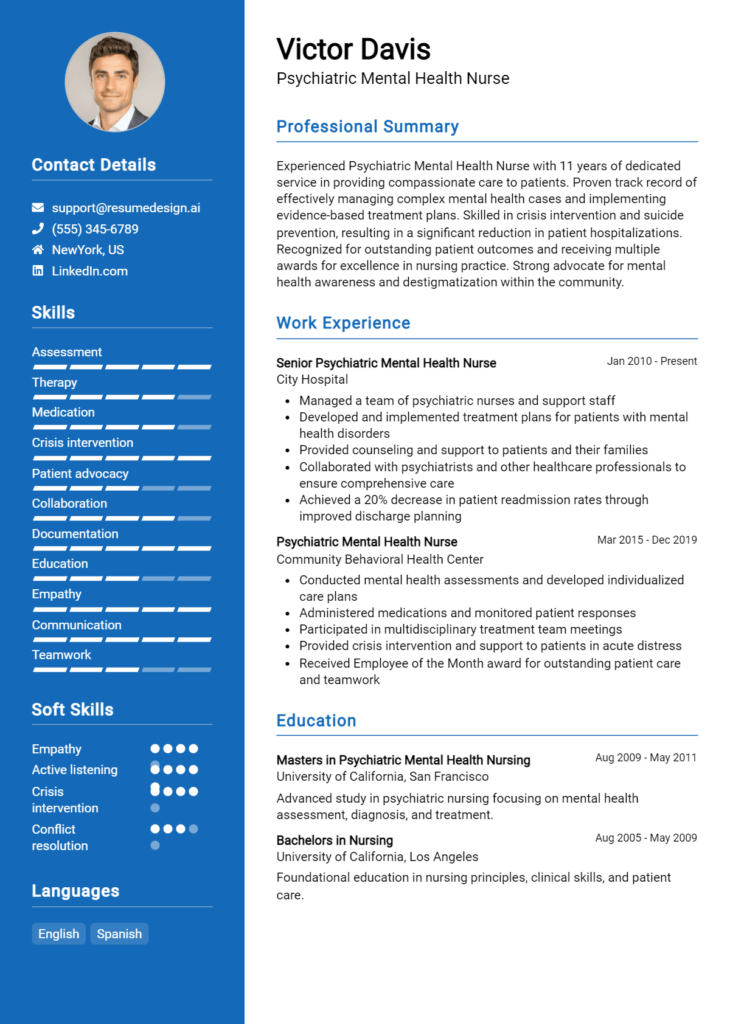Art Therapist Core Responsibilities
Art Therapists play a crucial role in promoting mental health and emotional well-being through creative expression. Their core responsibilities include assessing clients' needs, developing tailored treatment plans, and facilitating art sessions that encourage self-exploration and healing. This role requires strong interpersonal skills, creativity, and problem-solving abilities to effectively bridge the gap between psychology and the arts. A well-structured resume that highlights these qualifications is essential in demonstrating how these skills contribute to the organization's overall goals.
Common Responsibilities Listed on Art Therapist Resume
- Conducting individual and group art therapy sessions.
- Assessing client needs and creating personalized treatment plans.
- Documenting client progress and therapy outcomes.
- Collaborating with mental health professionals and educators.
- Facilitating art-based workshops and community outreach programs.
- Utilizing various art mediums to enhance therapeutic practices.
- Providing crisis intervention and support as needed.
- Maintaining a safe and supportive environment for clients.
- Educating clients and families about the benefits of art therapy.
- Staying updated on art therapy techniques and best practices.
- Evaluating the effectiveness of therapy sessions and adjusting approaches accordingly.
High-Level Resume Tips for Art Therapist Professionals
In the competitive field of art therapy, a well-crafted resume serves as your passport to securing an interview and making a lasting impression on potential employers. It is often the first opportunity you have to showcase your unique blend of therapeutic skills and creative expertise. A strong resume not only highlights your professional achievements and relevant experiences but also reflects your passion for helping others through art. In this guide, we will provide practical and actionable resume tips specifically tailored for art therapist professionals, ensuring that your application stands out in a crowded job market.
Top Resume Tips for Art Therapist Professionals
- Tailor your resume to each job description by incorporating keywords and phrases that align with the specific role and organization.
- Highlight your relevant education and certifications, such as a master's degree in art therapy or registration with a recognized professional body.
- Showcase your hands-on experience by detailing internships, volunteer work, or employment that involved direct client interaction.
- Quantify your achievements where possible, such as the number of clients served or improvements noted in clients' well-being.
- Include specific therapeutic techniques and modalities you are trained in, such as cognitive-behavioral art therapy or expressive arts therapy.
- Demonstrate your understanding of the populations you work with by mentioning specialized experience with children, veterans, or individuals with mental health challenges.
- Incorporate soft skills that are crucial in therapy settings, such as empathy, active listening, and communication skills.
- Utilize a clean and professional layout that makes your resume easy to read and visually appealing.
- Consider adding a brief summary statement at the top of your resume that encapsulates your career goals and therapeutic philosophy.
- Keep your resume to one or two pages, focusing on the most relevant information to maintain the reader's attention.
By implementing these tips, you can significantly enhance your chances of landing a job in the art therapy field. A polished and targeted resume will not only reflect your qualifications and achievements but also convey your dedication to the therapeutic process, ultimately making you a more attractive candidate to potential employers.
Why Resume Headlines & Titles are Important for Art Therapist
In the competitive field of art therapy, crafting an effective resume is crucial for standing out to prospective employers. A well-constructed resume headline or title serves as the first impression of a candidate’s qualifications, capturing the attention of hiring managers within seconds. A strong headline should encapsulate the essence of the candidate’s skills and experiences in a concise, impactful phrase that is directly relevant to the art therapist role. By highlighting key qualifications right at the top, job seekers can ensure that their resumes make a memorable statement and entice hiring managers to delve deeper into their applications.
Best Practices for Crafting Resume Headlines for Art Therapist
- Keep it concise: Aim for a headline that is brief yet powerful, ideally no more than 10-12 words.
- Be role-specific: Tailor the headline to reflect the specific position of art therapist you are applying for.
- Highlight key strengths: Include relevant skills, certifications, or experiences that set you apart.
- Use action-oriented language: Opt for dynamic verbs that convey your proactive approach and achievements.
- Incorporate keywords: Use industry-related keywords that align with the job description to improve searchability.
- Showcase unique qualifications: If you have a specialization, mention it to differentiate yourself from other candidates.
- Avoid jargon: Keep the language clear and professional without unnecessary technical terms.
- Ensure relevance: Make sure the headline aligns with the job description and reflects the needs of the employer.
Example Resume Headlines for Art Therapist
Strong Resume Headlines
Compassionate Art Therapist with 5+ Years of Experience in Trauma-Informed Care
Certified Art Therapist Specializing in Child and Adolescent Therapy
Innovative Art Therapist Committed to Enhancing Mental Health Through Creative Expression
Licensed Art Therapist with Proven Success in Community-Based Initiatives
Weak Resume Headlines
Art Therapist Looking for a Job
Experienced Professional
Therapist with Various Skills
The strong resume headlines are effective because they clearly convey specific strengths and experiences related to the art therapy profession, making them appealing to hiring managers who are seeking qualified candidates. Each headline highlights unique qualifications, ensuring immediate relevance to the job at hand. Conversely, the weak headlines fail to impress due to their vagueness and lack of specificity, leaving hiring managers with little understanding of the candidate's qualifications or suitability for the role. A strong, targeted headline can make all the difference in capturing attention and securing an interview.
Writing an Exceptional Art Therapist Resume Summary
A well-crafted resume summary is essential for an Art Therapist as it serves as the first impression a hiring manager has of a candidate's qualifications. This concise paragraph can quickly capture attention, spotlighting key skills, relevant experience, and notable accomplishments that align with the job role. An impactful summary not only highlights the therapist’s unique qualifications but also sets the stage for a more detailed exploration of their resume. Tailored specifically to the job for which the candidate is applying, a strong summary can significantly increase the chances of making it through the initial screening process.
Best Practices for Writing a Art Therapist Resume Summary
- Quantify achievements to illustrate impact (e.g., number of clients served, percentage of improvement in mental health).
- Focus on relevant skills that align with the job description, such as therapeutic techniques and communication skills.
- Tailor the summary for each job application to reflect the specific requirements and values of the organization.
- Keep it concise, ideally within 3-5 sentences, to ensure clarity and focus.
- Use active language and strong action verbs to convey enthusiasm and professionalism.
- Highlight specialized training or certifications that are relevant to art therapy.
- Incorporate keywords from the job description to pass through applicant tracking systems.
- Showcase a blend of technical skills and soft skills, emphasizing the ability to connect with clients.
Example Art Therapist Resume Summaries
Strong Resume Summaries
Compassionate Art Therapist with over 5 years of experience facilitating art therapy sessions for diverse populations, including at-risk youth and individuals with PTSD. Successfully improved client engagement by 30% through the implementation of innovative therapeutic techniques and personalized art projects.
Licensed Art Therapist dedicated to fostering emotional healing and personal growth through creative expression. Led community workshops that increased participant self-esteem by 25%, utilizing a holistic approach that integrates mindfulness and artistic exploration.
Results-driven Art Therapist with a Master's in Art Therapy and certification in trauma-informed care. Skilled in developing tailored treatment plans that have led to a 40% improvement in client-reported outcomes, fostering resilience and emotional well-being.
Weak Resume Summaries
Experienced therapist looking for a position where I can help people with art.
Art Therapist with some experience in various settings and a passion for helping clients.
The examples of strong resume summaries demonstrate clarity, specificity, and quantifiable outcomes, showcasing the candidates' direct relevance to the role of an Art Therapist. They effectively highlight unique qualifications and achievements, making them compelling to hiring managers. Conversely, the weak resume summaries lack detail, quantifiable results, and a clear connection to the job, making them less impactful and memorable.
Work Experience Section for Art Therapist Resume
The work experience section of an Art Therapist resume is crucial as it serves as a platform to illustrate the candidate's technical skills, team management abilities, and the capacity to deliver high-quality therapeutic outcomes. This section not only highlights specific responsibilities held in previous roles but also showcases the impact of those roles through quantifiable achievements. Aligning past experiences with industry standards is essential, as it allows potential employers to gauge the candidate's proficiency and suitability for the position. By effectively detailing work experiences, candidates can differentiate themselves in a competitive field and demonstrate their readiness to contribute to the well-being of clients through art therapy.
Best Practices for Art Therapist Work Experience
- Focus on specific therapeutic techniques and modalities used during sessions.
- Quantify results achieved, such as improvements in client well-being or engagement.
- Highlight collaboration with other healthcare professionals and interdisciplinary teams.
- Include leadership roles in managing art therapy programs or workshops.
- Detail professional development activities, such as certifications or workshops attended.
- Emphasize client-centered approaches and individualized treatment plans.
- Showcase adaptability in utilizing various art forms to cater to diverse client needs.
- Incorporate feedback from clients or stakeholders that demonstrates the impact of your work.
Example Work Experiences for Art Therapist
Strong Experiences
- Successfully developed and implemented a community art therapy program that increased client participation by 40% over one year.
- Led a team of five therapists to create an innovative group therapy workshop that resulted in a 30% improvement in participants' emotional coping skills, as measured by pre- and post-assessment surveys.
- Collaborated with a multidisciplinary team to design and execute individual treatment plans that improved clients' overall satisfaction scores by 25% over six months.
- Conducted a research study on the effectiveness of art therapy in trauma recovery, presenting findings at a national conference, which contributed to three new client referrals.
Weak Experiences
- Worked with clients in an art therapy setting.
- Helped organize group activities for clients.
- Participated in team meetings discussing client progress.
- Gained experience in art-related tasks.
The examples provided illustrate the difference between strong and weak work experience statements. Strong experiences are characterized by specific, quantifiable outcomes and demonstrate leadership and collaboration within a therapeutic context. They provide concrete evidence of the candidate's impact on client well-being and program effectiveness. In contrast, weak experiences lack detail and measurable results, making them less compelling and failing to convey the candidate's true capabilities and contributions to the field of art therapy.
Education and Certifications Section for Art Therapist Resume
The education and certifications section of an Art Therapist resume is critical in establishing a candidate’s qualifications and credibility within the field. This section not only showcases the academic background essential for a successful career in art therapy but also highlights the candidate’s commitment to continuous professional development through industry-relevant certifications and specialized training. By detailing relevant coursework and certifications, applicants can effectively demonstrate their expertise and alignment with job requirements, making them more appealing to potential employers.
Best Practices for Art Therapist Education and Certifications
- List degrees in a clear and concise format, including the institution name, degree obtained, and graduation date.
- Highlight any certifications specific to art therapy, such as Registered Art Therapist (ATR) or Board Certified Art Therapist (ATR-BC).
- Include relevant coursework that directly relates to art therapy practices, psychology, and counseling.
- Prioritize advanced degrees or certifications that showcase a higher level of expertise in the field.
- Detail any specialized training or workshops attended that enhance your therapeutic skills.
- Keep the information updated to reflect the most current qualifications and certifications.
- Use clear headings and bullet points for easy readability and organization.
- Consider adding ongoing education or professional development activities to demonstrate a commitment to lifelong learning.
Example Education and Certifications for Art Therapist
Strong Examples
- M.A. in Art Therapy, New York University, Graduated May 2021
- Registered Art Therapist (ATR), Credentialed by the Art Therapy Credentials Board, 2022
- Completed 40-hour workshop on Trauma-Informed Care in Art Therapy, 2023
- B.A. in Psychology with a Minor in Studio Art, University of California, Graduated June 2019
Weak Examples
- B.S. in Business Administration, University of Florida, Graduated 2018
- Certificate in Graphic Design, Online Course, 2020
- High School Diploma, Anytown High School, 2016
- Outdated certification in Art Education, Expired 2020
The strong examples are considered effective because they demonstrate direct relevance to the art therapy field, emphasizing degrees and certifications that align with industry standards. They highlight academic pathways and credentials that are recognized and respected in the profession. Conversely, the weak examples lack relevance to art therapy, showcasing qualifications that do not support the professional role or have become outdated, thereby diminishing the candidate's suitability for the position.
Top Skills & Keywords for Art Therapist Resume
As an Art Therapist, possessing a well-rounded set of skills is crucial for effectively supporting clients in their therapeutic journeys. A strong resume highlights both hard and soft skills, demonstrating your ability to create a safe, nurturing environment for self-expression and healing through art. The right combination of skills not only showcases your qualifications but also reflects your understanding of therapeutic processes and your capability to connect with individuals on a deeper level. By emphasizing these skills, you can create a compelling resume that sets you apart in the competitive field of art therapy.
Top Hard & Soft Skills for Art Therapist
Soft Skills
- Empathy
- Active Listening
- Communication Skills
- Patience
- Creativity
- Problem-Solving
- Emotional Intelligence
- Adaptability
- Nonverbal Communication
- Conflict Resolution
- Interpersonal Skills
- Cultural Sensitivity
- Team Collaboration
Hard Skills
- Knowledge of Art Techniques
- Familiarity with Therapeutic Modalities
- Understanding of Psychological Principles
- Assessment and Evaluation Skills
- Crisis Intervention Techniques
- Record Keeping and Documentation
- Client Relationship Management
- Knowledge of Art Materials and Tools
- Training in Art Therapy Software
- Research Skills
- Knowledge of Ethical Guidelines
- Experience with Group Facilitation
- Workshop Planning and Implementation
- Knowledge of Developmental Psychology
By integrating these skills into your resume and showcasing your relevant work experience, you can effectively demonstrate your qualifications as an Art Therapist and your commitment to fostering healing through creativity.
Stand Out with a Winning Art Therapist Cover Letter
Dear [Hiring Manager’s Name],
I am writing to express my interest in the Art Therapist position at [Organization's Name], as advertised on [where you found the job listing]. With a Master’s degree in Art Therapy from [Your University] and over [X years] of hands-on experience working with diverse populations, I am excited about the opportunity to contribute my skills and passion to your team. My background in psychology, combined with my artistic abilities, enables me to provide a holistic approach to therapy that fosters healing and personal growth.
During my tenure at [Previous Organization or Position], I successfully designed and implemented individualized art therapy programs tailored to the unique needs of clients, including children and adults coping with trauma, anxiety, and depression. By creating a safe and supportive environment, I encourage self-expression and exploration through various art mediums. My approach not only promotes emotional well-being but also empowers clients to gain insights into their feelings and behaviors. I am particularly proud of a recent initiative where I collaborated with local schools to introduce art therapy workshops, resulting in improved emotional resilience among students.
I am deeply committed to the principles of empathy, respect, and inclusivity in my practice. I believe that art can serve as a powerful tool for communication, especially for those who may struggle with verbal expression. I am eager to bring my expertise in therapeutic techniques and my dedication to client-centered care to [Organization's Name]. I look forward to the opportunity to discuss how my experience and vision align with your mission to support individuals on their healing journeys.
Thank you for considering my application. I hope to discuss my qualifications further in an interview and explore how I can contribute to the invaluable work at [Organization's Name]. I am looking forward to the possibility of joining your team and making a positive impact in the lives of those you serve.
Sincerely,
[Your Name]
[Your Phone Number]
[Your Email Address]
Common Mistakes to Avoid in a Art Therapist Resume
Crafting a compelling resume as an Art Therapist requires a keen understanding of both the therapeutic and artistic aspects of the role. However, many applicants make common mistakes that can hinder their chances of landing an interview. By avoiding these pitfalls, you can create a resume that effectively showcases your unique skills and experiences in the field of art therapy.
Neglecting to Tailor the Resume: Submitting a generic resume that doesn’t highlight specific skills or experiences related to art therapy can make it difficult for hiring managers to see your fit for the role. Tailor your resume to match the job description.
Ignoring Relevant Certifications: Failing to list relevant certifications, such as those from the Art Therapy Credentials Board (ATCB), can undermine your qualifications. Always include your certifications prominently.
Lack of Specific Examples: Providing vague descriptions of your experiences can diminish the impact of your accomplishments. Use specific examples that illustrate your therapeutic techniques and outcomes.
Overloading with Jargon: While it’s important to use field-specific terminology, overloading your resume with jargon can make it hard for non-specialist readers to understand your qualifications. Strike a balance to maintain clarity.
Inconsistent Formatting: An unorganized or inconsistent format can distract from your content and make your resume difficult to read. Use a clean, professional layout with consistent font sizes and styles.
Omitting Soft Skills: Art therapy requires strong interpersonal skills. Neglecting to showcase your empathy, communication abilities, and teamwork can leave out essential qualities that employers seek.
Not Including Volunteer Experience: Many art therapists gain valuable experience through volunteer work. Omitting this information can overlook relevant skills and demonstrate a commitment to the field.
Failure to Proofread: Typos and grammatical errors can create a negative impression of your attention to detail. Always proofread your resume or seek a second opinion to ensure professionalism.
Conclusion
As an Art Therapist, your role is vital in bridging the gap between art and emotional healing. You harness the power of creative expression to help clients explore their feelings, improve self-esteem, and manage stress. Effective communication, empathy, and a deep understanding of artistic techniques are essential skills that enhance your therapeutic practice.
In this article, we covered the importance of developing a strong resume that showcases your qualifications, experience, and unique approach to art therapy. Highlighting your educational background, relevant certifications, and hands-on experience with diverse populations can set you apart in a competitive job market. Additionally, including specific examples of your therapeutic techniques and success stories can further demonstrate your effectiveness as an Art Therapist.
Now is the time to take action! Review your Art Therapist resume to ensure it reflects your skills and experiences accurately. To assist you in this process, consider utilizing tools such as resume templates, which offer a professional layout to help you stand out. If you prefer a more customized approach, try using the resume builder for a personalized touch. You can also explore resume examples to gather ideas on how to present your unique qualifications effectively. Don’t forget to craft a compelling narrative for your job applications with the help of cover letter templates.
Take the next step in your career by refining your resume today!

